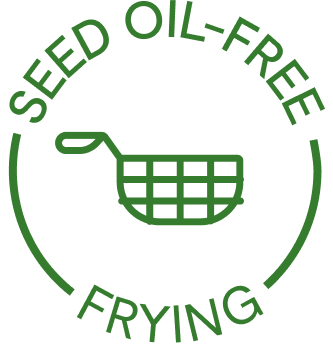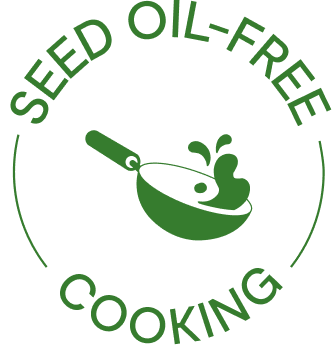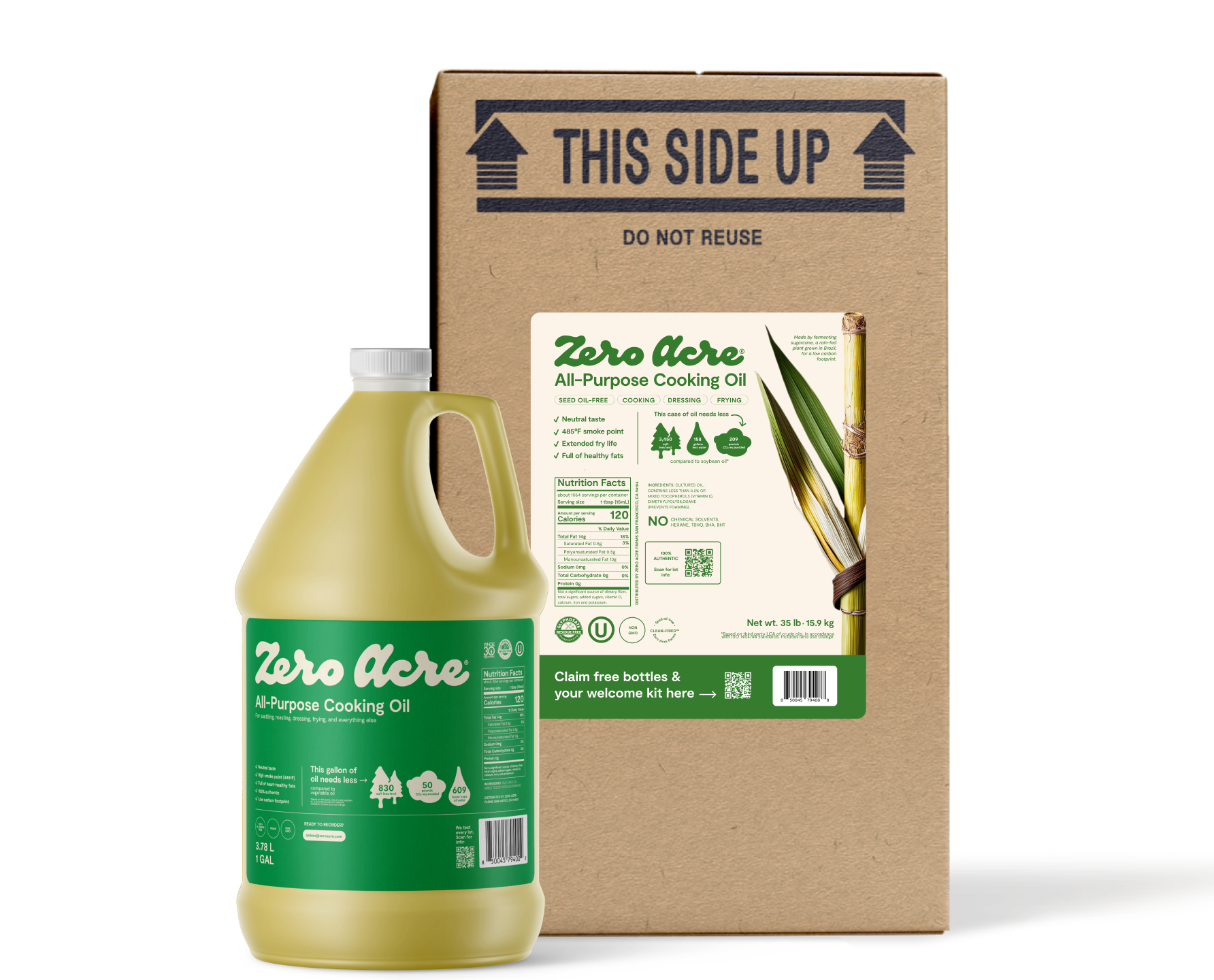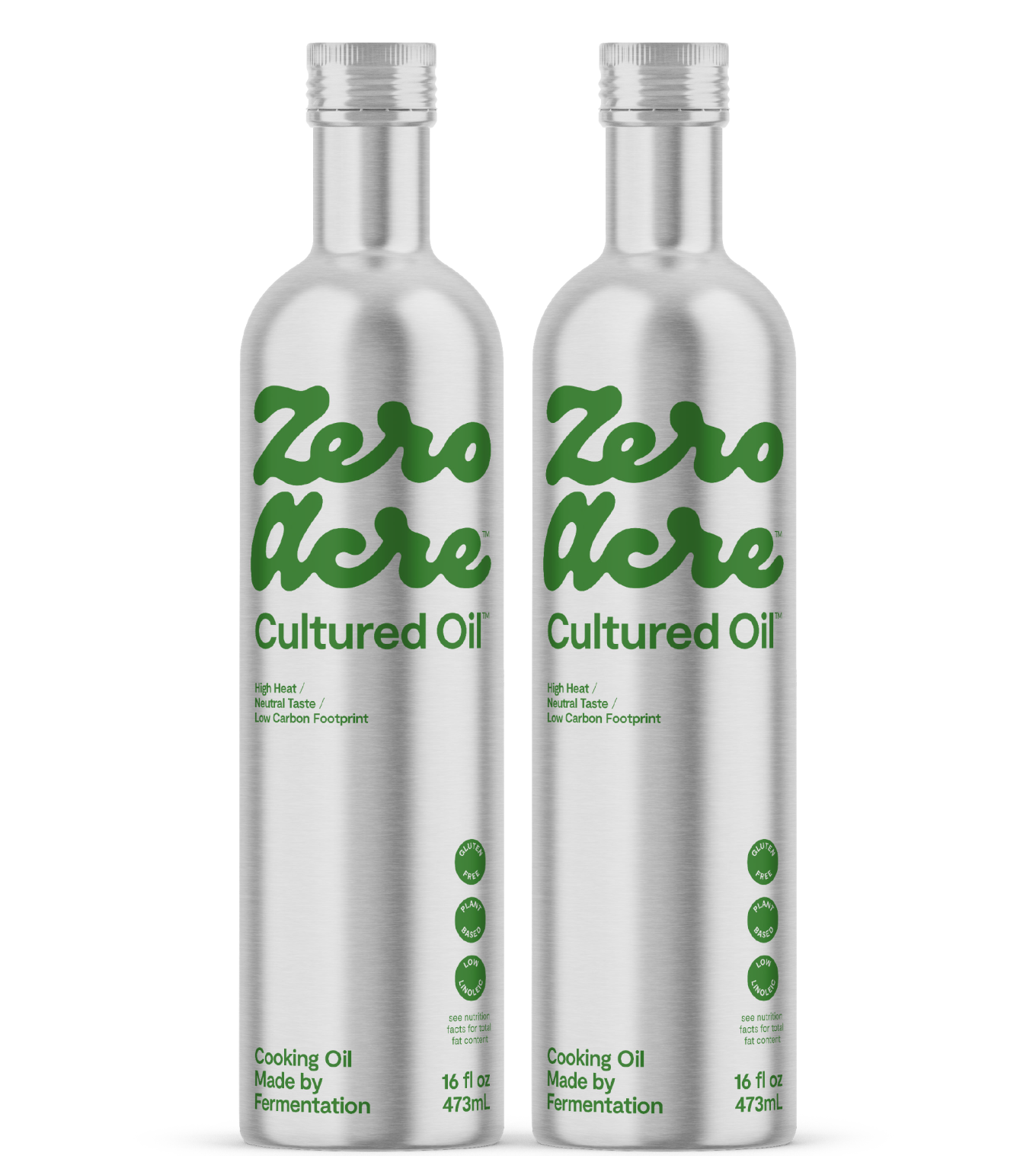WRITTEN BY: Corey Nelson
Article at a Glance:
All natural dietary fats contain a mixture of different fatty acids.
Fatty acids all consist of carbon and hydrogen atoms, but their lengths and atomic bonds vary.
The chain length and the number of double bonds gives different fatty acids a range of different health properties.
Too many polyunsaturated omega-6 fats in the diet appear to be a driving factor in chronic illness.
Monounsaturated fats are uncontroversially good for your cardiovascular and metabolic health.
Artificial trans fats are bad for your health (and are now banned), but naturally-occurring trans fats may be good for you.
Introduction
The last decade or so has seen a shift in the health space. While dietary fat was once vilified, many doctors, nutritionists, and other practitioners are embracing fat as good.
But not all fat is good for you, and knowing the difference between fatty acids (and where you can find these different types of fat) can mean the difference between supporting or hurting your health.
Fatty acids are the building blocks of dietary fats. Most dietary fats contain a combination of two or more of the following:
Saturated fatty acids
Monounsaturated fatty acids
Polyunsaturated fatty acids
In this article, we’ll cover details about each type of fatty acid, with important information you can use to make informed decisions about fats you eat.
What Are Fatty Acids?
Fatty acids are the individual molecules found in natural dietary fats. When you eat dietary fats (such as butter, olive oil, or coconut oil), you're consuming a mixture of several different types of fatty acids, each with different properties..
Fatty acids exist in two main forms: triglycerides and free fatty acids.
Triglycerides contain a glycerol "backbone," which is a molecule containing three carbons attached to three fatty acid chains. Most stored fats in your body, and most fats in foods, are in the triglyceride form.
In contrast to triglycerides, free fatty acids (or FFAs) are the "free" or unattached form of fat molecules — in other words, they're not attached to a glycerol backbone. FFAs are usually released from triglycerides by an enzyme called lipase, produced in your pancreas.
Free fatty acids are important for your metabolism because they're the primary type of fat your cells can use for energy. When you exercise and burn fat for fuel, your body is mostly relying on free fatty acids.
Free fatty acids usually have a straight, "chain-like" configuration with an even number of carbon atoms side-by-side. There are also hydrogen atoms attached to most, or all, of the carbon atoms. At the end of the fatty acid chain is a carboxyl (-COOH) group instead of glycerol.
Most natural fatty acids contain between four and 28 carbons in their chain, and the majority of dietary fatty acids contain 12 to 18 carbons.
Along with variations in their carbon chain length, fatty acids can also be saturated, monounsaturated, or polyunsaturated — all terms you might have heard before.
Saturated fats have hydrogen atoms bonded to every carbon atom, but unsaturated fats don't. (We'll get into the implications of saturated versus unsaturated fats in the following sections.)
Monounsaturated fats contain two side-by-side carbon atoms without hydrogen atoms, resulting in an unstable double bond between those two carbons.
Finally, polyunsaturated fats have three or more carbon atoms lacking hydrogen atoms, creating two or more double bonds in the fatty acid chain.
Even though fatty acids may have very different properties, including different health effects, all of these differences come down to the chain length and arrangement of carbon and hydrogen atoms.
Saturated Fatty Acids
Saturated fatty acids or saturated fats are fatty acid molecules that contain exclusively single bonds, a type of covalent bond involving a pair of electrons shared between atoms (carbon and hydrogen atoms, in the case of fatty acids).
Single bonds are very stable. Because of this unique feature, saturated fats are the most stable fat that oxidizes (breaks down at the molecular level) more slowly than other fatty acids [*].
The main sources of saturated fats are animal products (such as meat, dairy, and eggs), oils from tropical plants (mainly coconut oil and palm oil), and some nuts and seeds. Seafood is low in saturated fats.
In your body, saturated fats are an important component of myelin, a sheath that protects your nerves, where their structural stability provides strength and rigidity [*].
Medium-Chain Triglycerides (MCTs)
A less common type of saturated fat mainly found in coconut oil and palm oil, but also in low amounts in some animal products including butter, is known as medium-chain triglycerides (MCTs) [*,*,*,*].
These fatty acids have fewer carbon atoms than most saturated fats (between 6 and 12) in their fatty acid chains, hence their name [*].
MCTs have different properties from other saturated fats because of their unique molecular structure. They're also very easy for your body to use quickly as fuel, making them popular among athletes [*].
Most researchers in the field agree that saturated MCTs are not associated with cardiovascular risk or other related issues, and may even have benefits for cardiovascular and metabolic health [*].
Short-chain Fatty Acids (SCFAs)
Short-chain fatty acids (SCFAs) are saturated fats with 1 to 6 carbon atoms in their chains, most commonly 2 to 4 carbons [*].
Your gut microbiome produces SCFAs through fermentation when you eat soluble fiber — usually from fruits or vegetables [*].
SCFAs also occur naturally in trace amounts in some foods including butter and fermented foods like sauerkraut [*,*].
And like MCTs, they could potentially have cardiovascular and other health benefits, according to preliminary research [*,*,*].
Monounsaturated Fatty Acids
Monounsaturated fatty acids or monounsaturated fats contain one double bond, also called an unsaturated bond, in their fatty acid chains.
Double bonds are less molecularly stable than single bonds, but monounsaturated fats still oxidize (break down) very slowly because they've only got one bond of this type [*].
The most common sources of monounsaturated fats include olive oil, avocado oil, and certain nuts. They also occur in lower amounts in many other foods, including chicken, beef, pork, and seafood [*,*,*,*].
Because of their stability, monounsaturated fats are shelf-stable and don't go rancid quickly [*,*]. They're also very stable when heated, which makes them excellent cooking oils [*].
Compared to the long-chain saturated fatty acids covered in the previous section, monounsaturated fats are more likely to be burned for energy and less likely to be stored as body fat [*].
Eating monounsaturated fat increases fat-burning and energy expenditure, which are beneficial for metabolic health [*].
Monounsaturated fats also have a well-deserved reputation as heart-healthy fats. Olive oil and nuts high in monounsaturated fats are staples in the Mediterranean diet, which is associated with a reduced risk of heart disease, other chronic diseases, and mortality (death) [*,*].
Because of their oxidative stability, monounsaturated fats decrease the susceptibility of LDL cholesterol to oxidation, which is associated with a lower risk of arterial disease [*].
Other evidence suggests diets high in monounsaturated fatty acids may improve cholesterol, lower blood pressure, and reduce blood sugar levels [*].
Zero Acre oil is an all-purpose cooking oil high in heart-healthy monounsaturated fats. It contains even more monounsaturated fats than olive oil and avocado oil, with a fraction of the environmental footprint.
Polyunsaturated Fatty Acids
Polyunsaturated fatty acids or polyunsaturated fats contain two or more double bonds, also called unsaturated bonds, in their fatty acid carbon chains. Because of this feature, polyunsaturated fats are the least stable type of fatty acid [*].
Common whole food sources of polyunsaturated fatty acids include nuts, seeds, cereal grains, meat, seafood, and other animal products [*,*,*,*,*,*,*].
Polyunsaturated Omega-6 Fatty Acids
Omega-6 fatty acids are a type of fatty acid your body can't produce from other nutrients and are therefore considered essential [*]. Omega-6 fatty acids are necessary in extremely small amounts, but contribute to health issues when eaten in excess [*].
Human requirements for omega-6 linoleic acid are around 1-2% of overall calories, but higher intakes are associated with harmful effects including inflammation, obesity, and cardiovascular disease [*,*,*,*,*,*].
Because of the increasing consumption of seed-derived vegetable oils high in linoleic acid, the average person today eats 6-10% of their calories from linoleic acid [*,*,*]. These intake levels correspond to around 20% of total calories coming from highly processed seed oils used as cooking oils and as ingredients in processed, pre-packaged foods.
Even though omega-6 linoleic acid is essential, deficiencies are extremely rare and only occur in cases of malnutrition or starvation [*,*]. If you eat a diverse diet high in fresh, nutrient-rich foods, you'll easily obtain sufficient amounts of this omega-6 polyunsaturated fat without seeking it out or supplementing it.
Polyunsaturated Omega-3 Fatty Acids
According to the National Institutes of Health (NIH), current estimates of the total omega-3 requirements are 1.1-1.6 grams per day for adults [*]. The best source of omega-3s is seafood, which is why health authorities recommend consuming several servings of fatty fish each week [*].
The dietary ratio of essential fatty acids is also important, and research suggests consuming approximately equal amounts of omega-3 and omega-6 fats is necessary for optimal health [*]. However, the average person in the United States now eats 20 times more omega-6 than omega-3 fats, an imbalanced ratio associated with inflammation and other health problems [*].
Along with avoiding seed oils and other highly processed sources of omega-6 linoleic acid, eating seafood high in omega-3 EPA and DHA is an effective way to reduce inflammation and achieve the proper dietary ratio of these polyunsaturated fats [*].
But research suggests that merely increasing omega-3 intake without also limiting linoleic acid isn't effective at decreasing inflammation [*]. Excessive omega-6 linoleic acid intake also depletes tissue levels of omega-3 fats, further increasing inflammation [*].
Ultimately, you do need some polyunsaturated fatty acids in your diet (they're essential), but consuming too much omega-6 fat is bad for your health. You can reduce your omega-6 intake by replacing seed oils with fats and oils that contain low and evolutionarily appropriate levels of omega-6.
Trans Fatty Acids
Trans unsaturated fatty acids, also called trans fats, are fatty acids containing one or more double bonds with a hydrogen atom attached in a trans or reversed position compared to the usual (cis) configuration.
Unlike other unsaturated fats, trans fats are solid at room temperature.
Until they were recently banned in the United States and many other countries, the most common sources of trans fats were partially hydrogenated vegetable oils [*,*].
These artificial trans fats were manufactured by hydrogenation, or bubbling hydrogen through heated vegetable oil [*].
The History and Harms of Trans Fats
Partially hydrogenated oils became popular during the 20th century, largely due to their low cost, ease of use, and desirable effects on the taste and texture of foods [*].
For decades, major sources of artificial trans fats included margarine, shortening, cakes, cookies, crackers, potato chips, french fries, and popcorn [*].
Research links artificial trans fats with inflammation, heart disease, cancer, and increased rates of all-cause mortality (death) [*,*,*,*].
Before the recent ban, researchers estimated that partially hydrogenated vegetable oils caused up to 100,000 premature deaths annually from cardiovascular disease in the United States alone [*].
Trans Fats in Fried Foods
Today, the most common sources of harmful trans fats are deep-fried foods from restaurants, which aren't covered under bans because they're a byproduct of the frying process.
Frying and reheating vegetable oils from seed crops can increase trans fat levels by ten- to twenty-fold or more, increasing trans fats to 5% of the total fatty acid content in reheated frying oils [*,*].
Because most restaurants use inexpensive vegetable oils high in polyunsaturated omega-6 linoleic acid, which is typically reheated dozens or hundreds of times before being discarded, a single serving of deep-fried restaurant food may contain 1-2 grams of trans fats or more [*,*,*].
Polyunsaturated fats used for frying and high-heat cooking not only break down into trans fats, but also other harmful byproducts like aldehydes and acrylamide [*].
The creation of trans fats in the frying process may explain why frequent consumption of fried foods is linked with significantly higher rates of obesity, weight gain, cardiovascular disease, and death from cardiovascular disease or other causes [*,*,*].
The best way to avoid trans fats and other harmful compounds in fried foods is to make your favorites at home using frying oils low in omega-6 linoleic acid.
Natural Trans Fats
Extremely low levels of certain trans fats occur naturally in the meat and milk products of ruminants (animals with multiple stomachs) like cows and sheep [*].
Ruminant fat contains up to 6% natural trans fats, which aren't covered by bans on artificial trans fats [*]. For reference, the artificial trans fat content of partially hydrogenated vegetable oils may reach 60%.
Unlike artificial trans fats, naturally occurring trans fatty acids aren't associated with health problems, and early research suggests they may have anti-inflammatory health benefits [*,*].
The Takeaway
You're already eating a variety of fatty acids every day, so remembering which ones are problematic is an easy way to keep your diet healthy and balanced.
You don't have to memorize the chain length or chemical formulas of common fatty acids. Start by simply avoiding processed and fried foods made with vegetable oils high in linoleic acid.
Along with this change, there are plenty of vegetable oil substitutes for your favorite recipes. You can also replace calories from omega-6 polyunsaturated fats with heart-healthy and heat stable monounsaturated fats.
Zero Acre oil is a new all-purpose cooking oil that works for everything from salad dressings to deep frying. It's high in heart-healthy monounsaturated fats, environmentally friendly, making it better for you and the planet.






